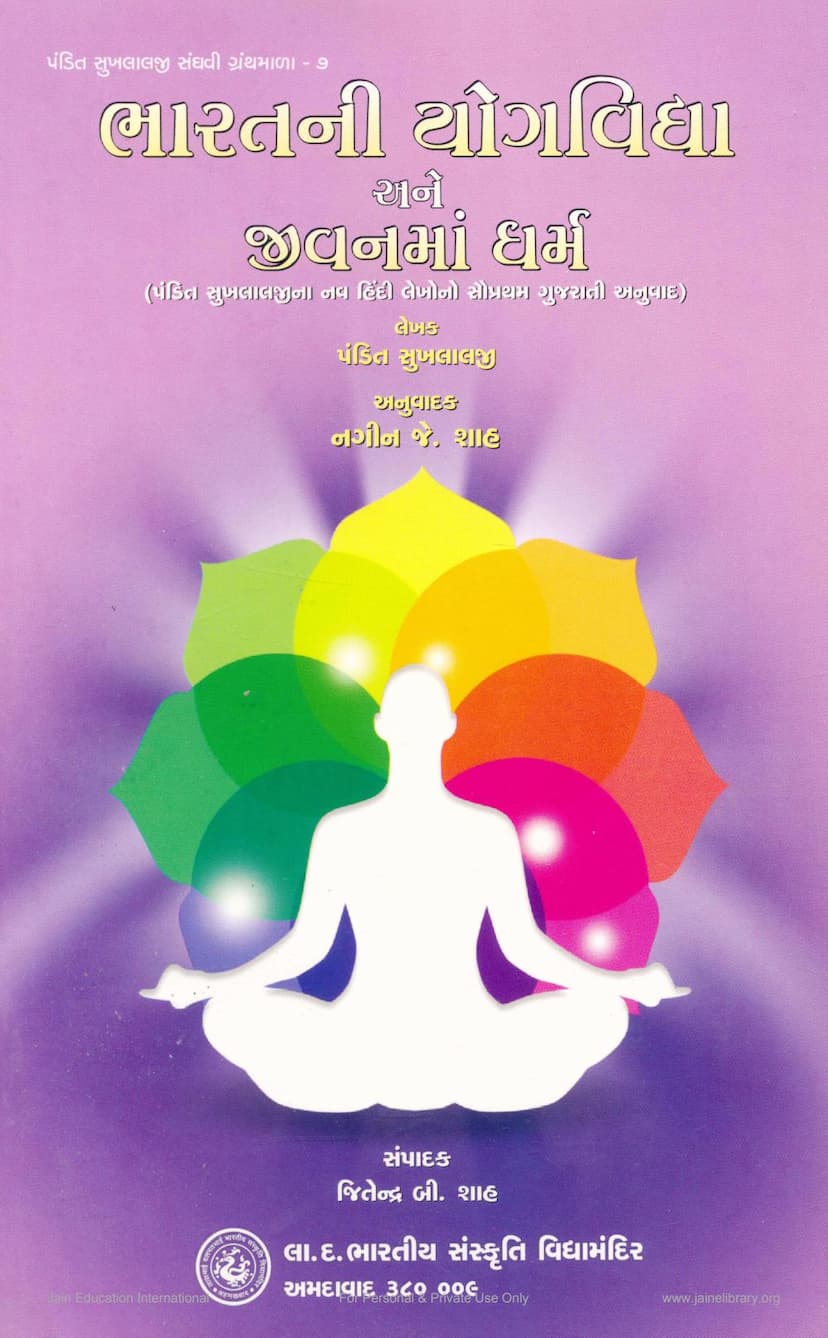Bharatni Yogvidya Ane Jivan Ma Dharm
Added to library: September 1, 2025

Summary
This book, "Bharatni Yogvidya ane Jivan ma Dharm" (India's Yoga Science and Religion in Life), is a collection of nine essays written in Hindi by the renowned scholar Pandit Sukhlalji Sanghavi, translated into Gujarati by Nagin J. Shah, and edited by Dr. Jitendra B. Shah. Published by L.D. Bharatiya Sanskriti Vidyamandir, Ahmedabad, this work delves into fundamental aspects of Indian culture, focusing on Yoga and Dharma.
The book aims to present a pure and comprehensive understanding of Yoga and Dharma, emphasizing the need for studying ancient literature and adopting a broad perspective. Pandit Sukhlalji, a deep scholar of Indian religious literature and philosophy, explores these topics with a thoughtful, research-oriented, and comparative approach.
The translator, Prof. Naginbhai J. Shah, was a devoted disciple of Pandit Sukhlalji and a scholar of religion and philosophy himself. His translation is praised for its simplicity and clarity, making the original Hindi essays accessible to Gujarati readers and providing an experience akin to reading the original works.
The collection covers a wide range of interconnected themes, including:
- The Seed and Development of Dharma: Exploring the fundamental essence of Dharma, its origins in the inherent will to live (jijivisha), and how it evolves through community and individual development.
- Dharma and Culture: Discussing the inseparable relationship between Dharma and culture, arguing that true culture is rooted in righteous conduct and spiritual progress.
- Dharma and Intellect: Examining the often perceived conflict between Dharma and intellect, advocating for their harmonious integration, where intellect guides Dharma and Dharma provides purpose to intellect.
- Yoga Science: Detailing the ancient Indian practice of Yoga, its origins, evolution, utility in life, the relationship between knowledge and Yoga, and the distinction between practical and spiritual Yoga. It highlights the comprehensive nature of Patanjali's Yoga Sutras and the contributions of Jain scholars like Acharya Haribhadra Suri.
- Transformation of Life Vision: Discussing the profound changes in perspective that can be achieved through spiritual practices and the importance of inner transformation.
- World Peace and Jainism: Exploring the principles of Ahimsa (non-violence) and its application in achieving world peace, specifically from the Jain perspective, and comparing it with other pacifist movements and figures like Mahatma Gandhi.
- Gandhiji's Contribution to Jainism: Analyzing how Mahatma Gandhi's interpretation and application of universal principles like Ahimsa, Satya, and Aparigraha revitalized Jain traditions and inspired practical, socially relevant actions within the Jain community.
- Dharma and the Pilgrimage of Knowledge - Vaishali: Highlighting Vaishali as a significant spiritual and intellectual center, a sacred land for both Jains and Buddhists, and emphasizing its historical and cultural importance as a place where profound philosophical insights emerged and spread.
- The Main Tool of Development: Positing responsibility as the primary driver of both physical and mental development, advocating for the cultivation of a sense of duty and purpose.
The book emphasizes that Dharma is not merely a set of external rituals but an inner transformation, a pursuit of truth, non-violence, and detachment. It criticizes the pitfalls of sectarianism, blind adherence to tradition, and the disconnect between spiritual ideals and practical life, urging readers to integrate spiritual wisdom into everyday existence. The essays collectively advocate for a balanced approach to life, integrating intellectual pursuit with spiritual practice, and societal engagement with personal purity, all aimed at achieving the ultimate goal of human welfare and spiritual liberation.